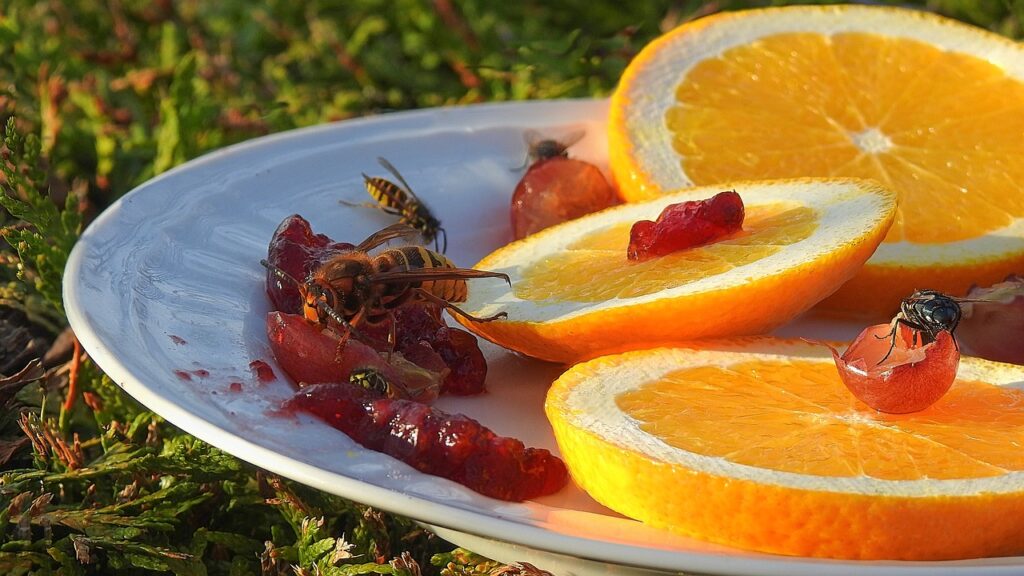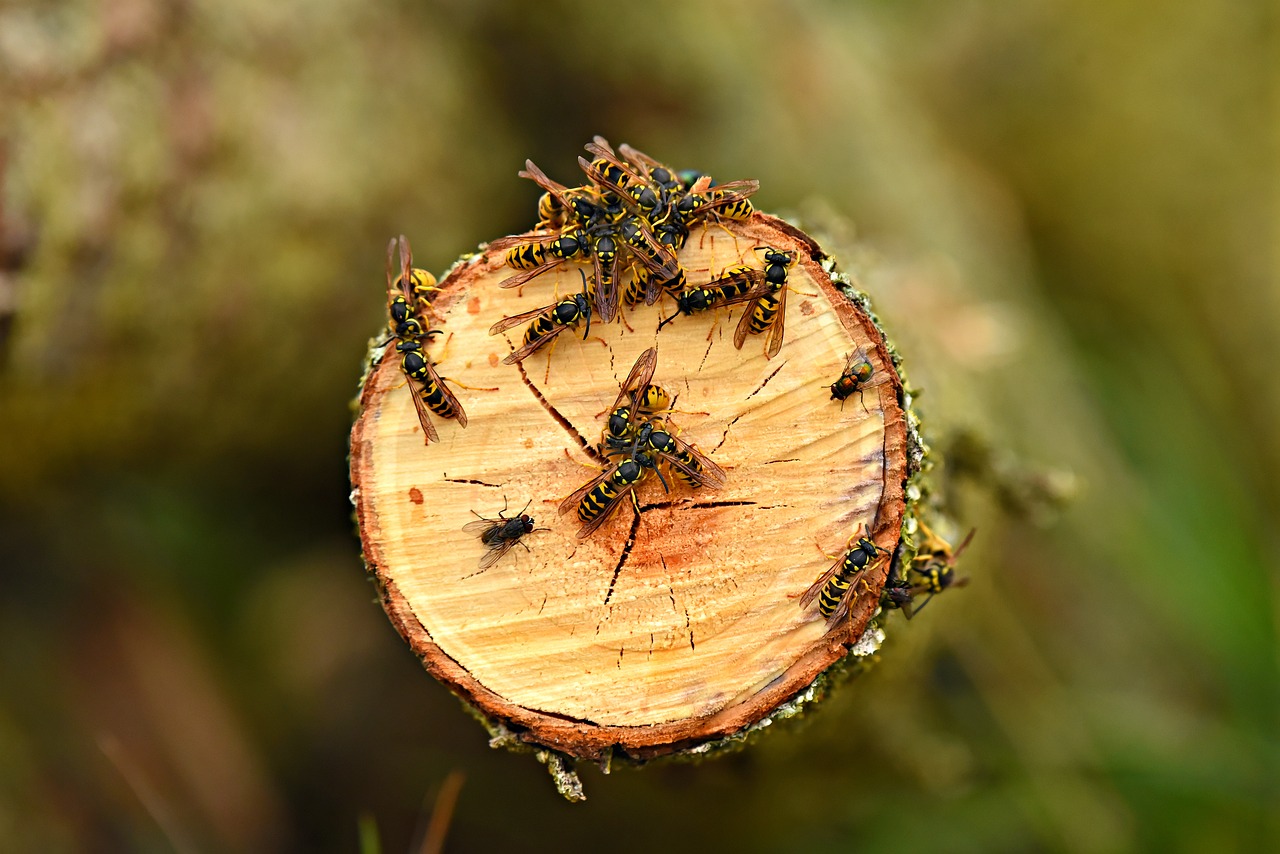There are so many reasons why you don’t want wasps on your property. They can sting you and your pets — not only very painful but wasp stings can also cause serious allergic reactions. Their nesting habits can lead to structural damage and attract other pests. But how are you going to get rid of the wasps if you can’t even locate their nest? Here’s how to find the wasp nest troubling your home.
Wasp nest facts
- There are many different kinds of wasps. “Wasps” is a general term these days. We use it to refer to flying and stinging pests, but there are actually many different kinds of wasps. The most common ones are hornets and yellow jackets. If you really want to find the wasp nest troubling your home, it’s important to know what kind of wasp you are dealing with. Different wasps have different nesting habits. Baldfaced hornets, for instance, like to nest in aerial spaces like eaves and roofs. Yellow jackets, on the other hand, are more likely to nest in the ground.
- Wasp nests are made of a paper-like material. Wasps like hornets and yellow jackets make their nest by combining saliva and woodshedding. What results is a nest made of a paper-like material. This is important to know because, well, paper is flammable. You may have seen many homeowners get rid of wasp nests with fire, but this is actually not advisable. You are only making yourself vulnerable to house fires.
- Wasps are territorial. Do you know why wasps seem to be very aggressive even if you are doing nothing to them? They are very territorial, so they treat you as a threat. This is obviously a disadvantage, but you can use it against them. You can set up a fake wasp nest on your property. Wasps looking for a place to nest will avoid your property, thinking that the area is already occupied by other wasps.

How to find the wasp nest
1. Make sure you are actually dealing with wasps
There are many different kinds of stinging insects, and some of them are more beneficial to you and less harmful to you. Bees, for instance, play a very important role in nature. Unfortunately, bee populations around the world are declining. You don’t want to contribute to this decline. If the stinging insects you have at home happen to be bees, call beekeepers or pest control professionals. Instead of simply killing them, they can make arrangements to relocate the beehives.
Wasps are beneficial too. They help in the biological control of garden pests and pollination. But the fact still remains that they are aggressive and territorial. You still don’t want them on your property. Do everything in your power to get rid of them.
You can Google images of bees and wasps to see their physical differences. Generally speaking, bees are “hairier” and more full-bodied while wasps are not hairy at all and are more slim-bodied.
2. Look at the common spots for wasp nests
You can find the wasp nest troubling your home by simply following a wasp. It will lead you to the nest. But if you don’t see wasps around, you can look at the common spots where wasps tend to nest. Here are interesting spots to look at:
- Attics and lofts
- Compost piles or in garden soil (underground)
- Eaves
- Garden decks and sheds
- Holes in trees or in tree branches
- Wall cavities
If there is a hollow on your property, the wasps are probably in it. The hollow can be natural, like in a tree trunk or tree branch. And it can be artificial, like in eaves or walls.
3. Find the wasp nest by following the wasps
If you see a wasp buzzing around, you can simply follow it. Eventually, it will go back to the nest. If you don’t see a wasp, you can bait them out with wasp attractors like flower nectars and fruits. But if you are going to do this, make sure to do it during the day when wasps are more active. You can also consider doing it late in the day when wasps are more likely to go back to their nest to rest.
When following a wasp, consider wearing protective gear like long-sleeved shirts, pants, boots, goggles, face masks, and gloves. You don’t want to get stung by these insects. Wasp stings are not just painful. They can also be incredibly dangerous if you get a severe allergic reaction from them.

What to do to the wasp nest
- Call pest control professionals. Wasps are dangerous and wasp nests can be hard to get rid of because of the material they are made of and the fact that they are built in obscure and inaccessible places. Your best bet is to just let pest control professionals handle them. Pest control professionals don’t just have the knowledge to deal with these pests properly. They also have the proper gear. Amateurs like yourself don’t usually have bee veils lying around.
- Get rid of the wasp nest with commercial products. You can get rid of a wasp nest yourself with insecticides. Bomb the wasp nest with the insecticide of your choice. Do this during the night when most wasps are already back in their nest to rest. Read the instructions and follow them diligently. Remember that insecticides can be toxic to humans too. Minimize the risk to yourself by following instructions. Also, avoid DIY methods as much as you can. They can cause more harm than good. Some articles, for instance, suggest you can get rid of yellow jackets on walls by bombing your wall with soapy water. This can actually cause more harm than good.
- Let the wasps die out on their own. Wasps are more vulnerable the colder it gets. Yellow jackets, for instance, peak during summer and fall. But their populations die out as the winter months approach because of the lack of resources. Yellow jackets can naturally die out even if you don’t do anything. And here’s the best part — they don’t reuse nests. Once they die and leave a nest behind, a new batch of yellow jackets is not likely to occupy the old nest.
Find the wasp nest and get rid of it
You can find the wasp nest troubling your home by simply following a wasp until it goes back to its nest. If there are no wasps around, you can bait them out with sweet food items like flower nectars and fruits.
It’s actually better to just call pest control professionals to get rid of wasp infestations, but if you want to get rid of the wasps yourself, you can rely on commercial products like insecticides. Just stay away from DIY methods because they may actually cause more harm than good, especially if the wasp nest is inside your home.

